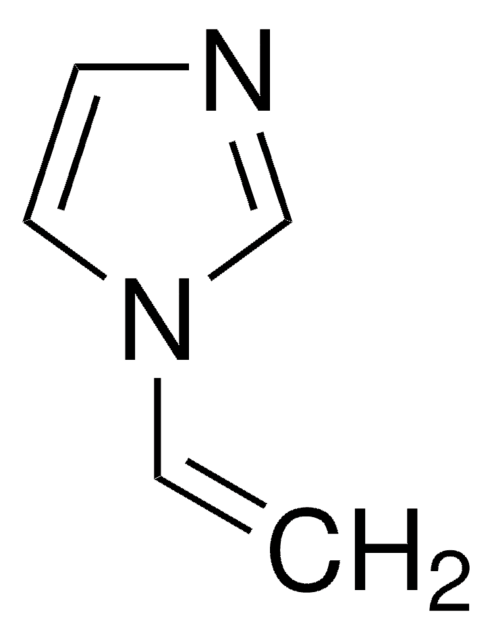96566
1-propanolo
analytical standard
Sinonimo/i:
Alcool propilico
About This Item
Prodotti consigliati
Grado
analytical standard
Livello qualitativo
Densità del vapore
2.1 (vs air)
Tensione di vapore
10 mmHg ( 147 °C)
14.9 mmHg ( 20 °C)
Saggio
≥99.9% (GC)
Temp. autoaccensione
700 °F
Durata
limited shelf life, expiry date on the label
Limite di esplosione
13.7 %
tecniche
HPLC: suitable
gas chromatography (GC): suitable
Indice di rifrazione
n20/D 1.384 (lit.)
n20/D 1.385
P. eboll.
97 °C (lit.)
Punto di fusione
−127 °C (lit.)
Densità
0.804 g/mL at 25 °C (lit.)
applicazioni
cleaning products
cosmetics
environmental
flavors and fragrances
food and beverages
personal care
Formato
neat
Stringa SMILE
CCCO
InChI
1S/C3H8O/c1-2-3-4/h4H,2-3H2,1H3
BDERNNFJNOPAEC-UHFFFAOYSA-N
Cerchi prodotti simili? Visita Guida al confronto tra prodotti
Descrizione generale
Applicazioni
- Determination of acetaldehyde, methanol, and higher alcohols in different liquor samples by headspace gas chromatography (HS-GC) method coupled with flame ionization detector (FID)
- Identification of major odorants in chixiang aroma-type liquor using gas chromatography-olfactometry and further determination of the alcoholic odorants by GC-FID
- Analysis of 56 illegal alcohol samples to detect the presence of methanol and its derivatives gas chromatography-mass spectrometry (GC-MS)
- Detection and quantification of volatile organic compounds (VOCs) in 75 liquor samples by gas chromatography combined with mass spectrometry (GC-MS)
- Qualitative and quantitative analysis of 10 volatile organic compounds from different chemical classes in potable whey-based spirits during different stages of distillation
Altre note
Avvertenze
Danger
Indicazioni di pericolo
Consigli di prudenza
Classi di pericolo
Eye Dam. 1 - Flam. Liq. 2 - STOT SE 3
Organi bersaglio
Central nervous system
Codice della classe di stoccaggio
3 - Flammable liquids
Classe di pericolosità dell'acqua (WGK)
WGK 1
Punto d’infiammabilità (°F)
71.6 °F - closed cup
Punto d’infiammabilità (°C)
22 °C - closed cup
Dispositivi di protezione individuale
Eyeshields, Faceshields, Gloves, type ABEK (EN14387) respirator filter
Scegli una delle versioni più recenti:
Possiedi già questo prodotto?
I documenti relativi ai prodotti acquistati recentemente sono disponibili nell’Archivio dei documenti.
I clienti hanno visto anche
Articoli
The Utility of Headspace Grade Solvents for the Analysis of Organic Volatile Impurities
Butyl methyl ether; Acetic acid; 2-Butanone; Ethyl acetate; Tetrahydrofuran; 1-Butanol; Isopropyl acetate; Heptane; Propyl acetate; 3-Methylbutanol; 4-Methyl-2-pentanone; Isobutyl acetate; Butyl acetate; Dimethyl sulfoxide; Anisole; Cumene
Protocolli
-Butanol; 2-Methyl-2-butanol; 2-Methyl-1-butanol; 3-Pentanol; 1-Butanol; 2-Methyl-1-propanol; 2-Pentanol, 98%; 3-Methyl-1-butanol; 1-Propanol
Separation of Acetone; Acetic acid; Propionic acid; Ethyl butyrate; Ethanol; Isoamyl acetate; Isobutyric acid; 3-Methyl-2-butanol; Methyl acetate; 1-Propanol; Acetal, ≥98%, FG; 2-Methyl-1-pentanol; Butyl acetate; Ethyl propionate; 3-Pentanol; 2-Pentanol, 98%; Ethyl isobutyrate; Isobutyl acetate; Acetaldehyde; Furfural; Butyric acid; Methanol; Ethyl acetate
GC Analysis of Class 3 Residual Solvents on SUPELCOWAX® 10
Il team dei nostri ricercatori vanta grande esperienza in tutte le aree della ricerca quali Life Science, scienza dei materiali, sintesi chimica, cromatografia, discipline analitiche, ecc..
Contatta l'Assistenza Tecnica.









